As COVID threat still exists, PH recovery hangs in the balance
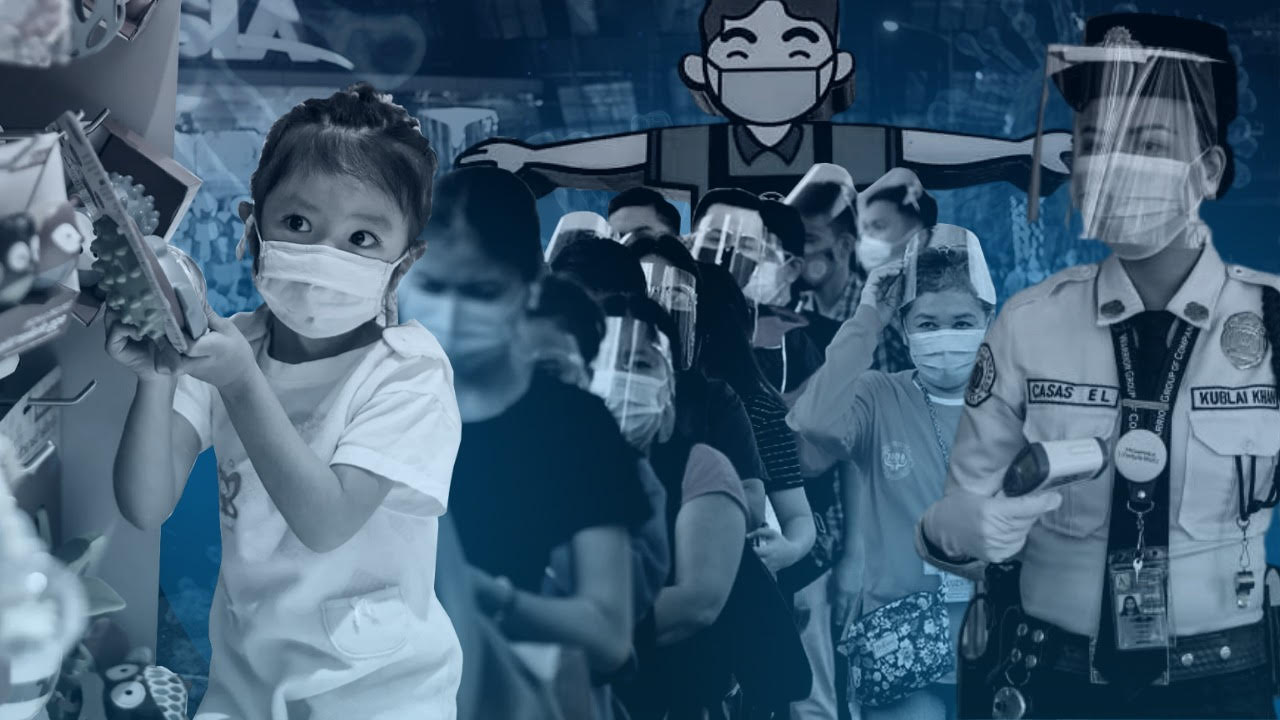
FILE PHOTO
MANILA, Philippines — With the shift of Metro Manila and 38 areas to COVID Alert Level 1 on Tuesday (March 1), the government already sees a possible end to the economic standstill brought by the health crisis.
Last Feb. 28, Socioeconomic Planning Secretary Karl Chua, who heads the National Economic and Development Authority (NEDA), said with the shift to the least restrictive Alert Level 1, the Philippines will be really on the road to recovery.
However, since COVID-19 still exists and Filipinos, especially health care workers, still need to prepare for a possible rise in cases again, the road to recovery still hangs in the balance.
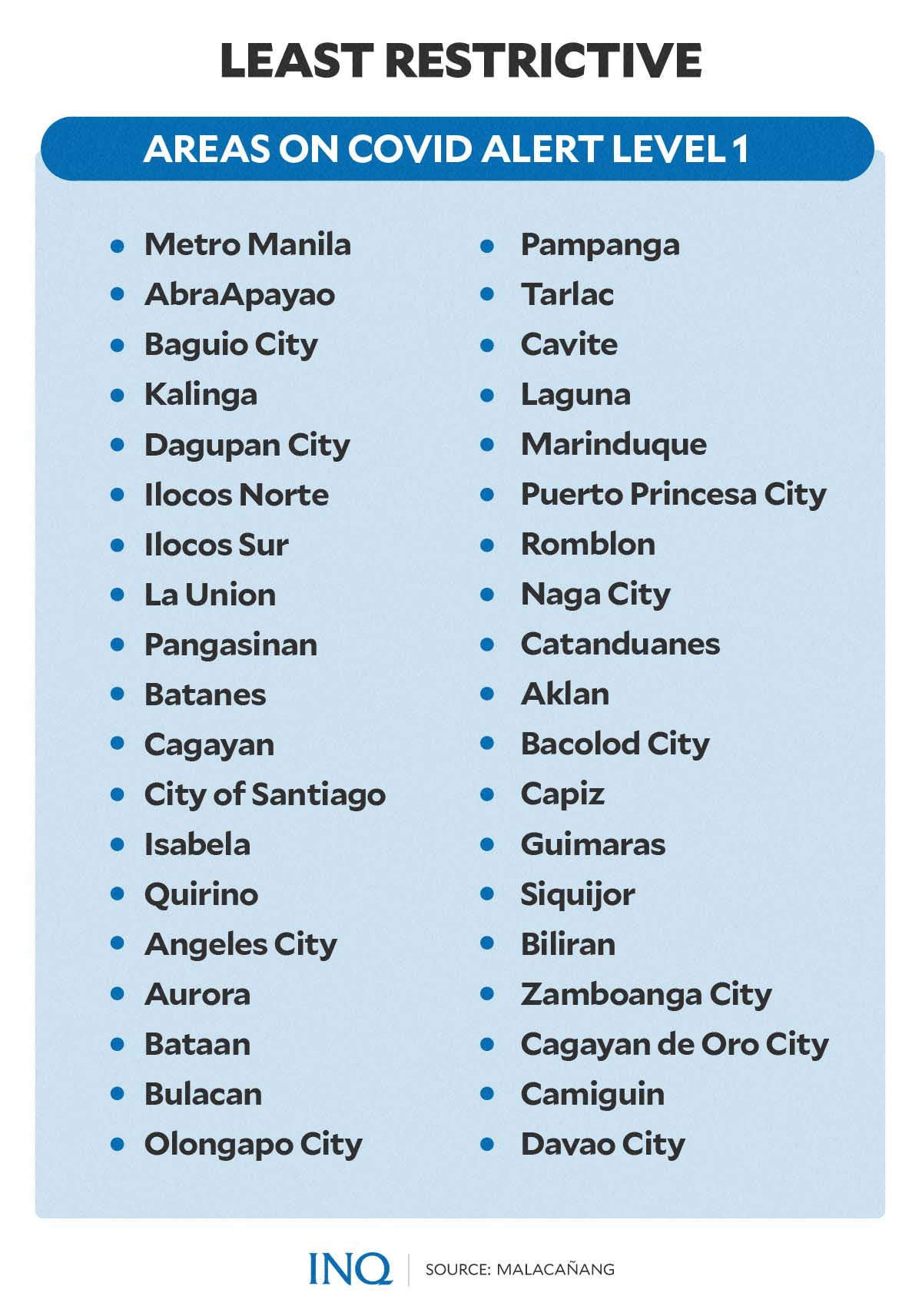
GRAPHIC: Ed Lustan
Last Feb. 27, the government said Metro Manila, 30 provinces and eight cities will be on Alert Level 1––where establishments can operate at 100 percent capacity and pre-pandemic activities can resume.
These are the areas which are now on Alert Level 1:
Article continues after this advertisement- Metro Manila
- Abra, Apayao, Baguio City and Kalinga
- Dagupan City, Ilocos Norte, Ilocos Sur, La Union and Pangasinan
- Batanes, Cagayan, City of Santiago, Isabela and Quirino
- Angeles City, Aurora, Bataan, Bulacan, Olongapo City, Pampanga and Tarlac
- Cavite and Laguna
- Marinduque, Puerto Princesa City and Romblon
- Naga City and Catanduanes
- Aklan, Bacolod City, Capiz and Guimaras
- Siquijor
- Biliran
- Zamboanga City
- Cagayan de Oro City and Camiguin
- Davao City
Malacañang said while the shift to Alert Level 1 may be regarded as a win against COVID, “this is not yet the time to celebrate,” adding that “we need to be responsible to ourselves, our families and our communities.”
Article continues after this advertisementCabinet Secretary Karlo Nograles, who also serves as presidential spokesperson, told Filipinos that while the Philippines was able to control the rise in cases, “the threat of COVID-19 remains in our midst.”
Least restrictive
On Feb. 27, the Inter-Agency Task Force for the Management of Emerging Infectious Diseases (IATF) approved revised guidelines on the implementation of the COVID Alert Level System.
The Department of Trade and Industry (DTI), last Feb. 28, said these are the things you need to know, especially when you’re staying in areas that are on Alert Level 1 until March 15:
- Establishments and activities can already operate 100 percent; no physical distancing
- Masks should always be worn, except when eating and drinking, participating in team or individual activities, and when engaged in outdoor sports or exercise activities
- Physical presence in offices is encouraged
- Isolation for international travel is not required; no requirements for domestic travel
- Physical barriers are not required; no paper-based contact tracing; digital contact tracing is optional
As presented by Trade Secretary Ramon Lopez during President Rodrigo Duterte’s Talk to the People, these are things you need to know for “closed spaces, crowded places, and closed settings”:
- Proof of complete vaccination for individuals who are 18 years and older is required; there is strict compliance to inspection of vaccination proofs
- Individuals who are 17 years and younger do not need to present proof of complete vaccination
- No acrylic or plastic dividers
- No age restrictions
- Presence of a safety and health officer in every establishment is “strictly needed”
The cap on international arrivals at the Ninoy Aquino International Airport will also be increased––from 5,000 to 10,000. Transportation Secretary Arthur Tugade said public transportation will operate at 100 percent capacity.
He said the passenger capacity for all operating rail lines will be 100 percent and that for road transportation, there are already 1,514 open routes in Metro Manila with 118,238 “operational units of different PUVs.”
Reviving PH economy
With these, Chua said there’s already a chance to recover the P3.8 trillion that was lost in the last two years––P1.3 trillion household income, P2.2 trillion corporate income and P0.3 trillion indirect taxes.
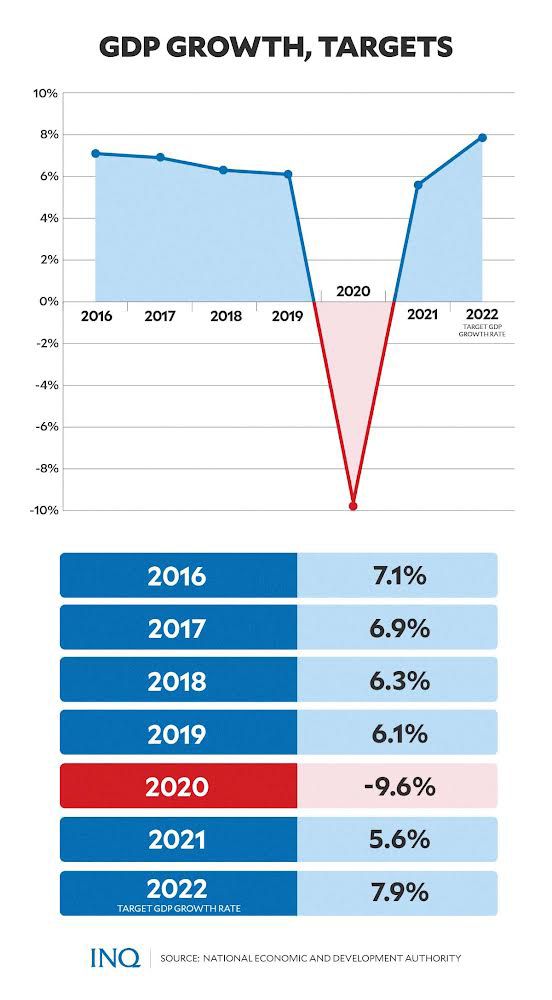
GRAPHIC: Ed Lustan
He said the GDP growth rate was 7.1 percent in 2016, 6.9 percent in 2017, 6.3 percent in 2018, 6.1 percent in 2019, negative 9.6 percent in 2020 and 5.6 percent in 2021. This year, the government said it projects a growth rate of 7.9 percent.
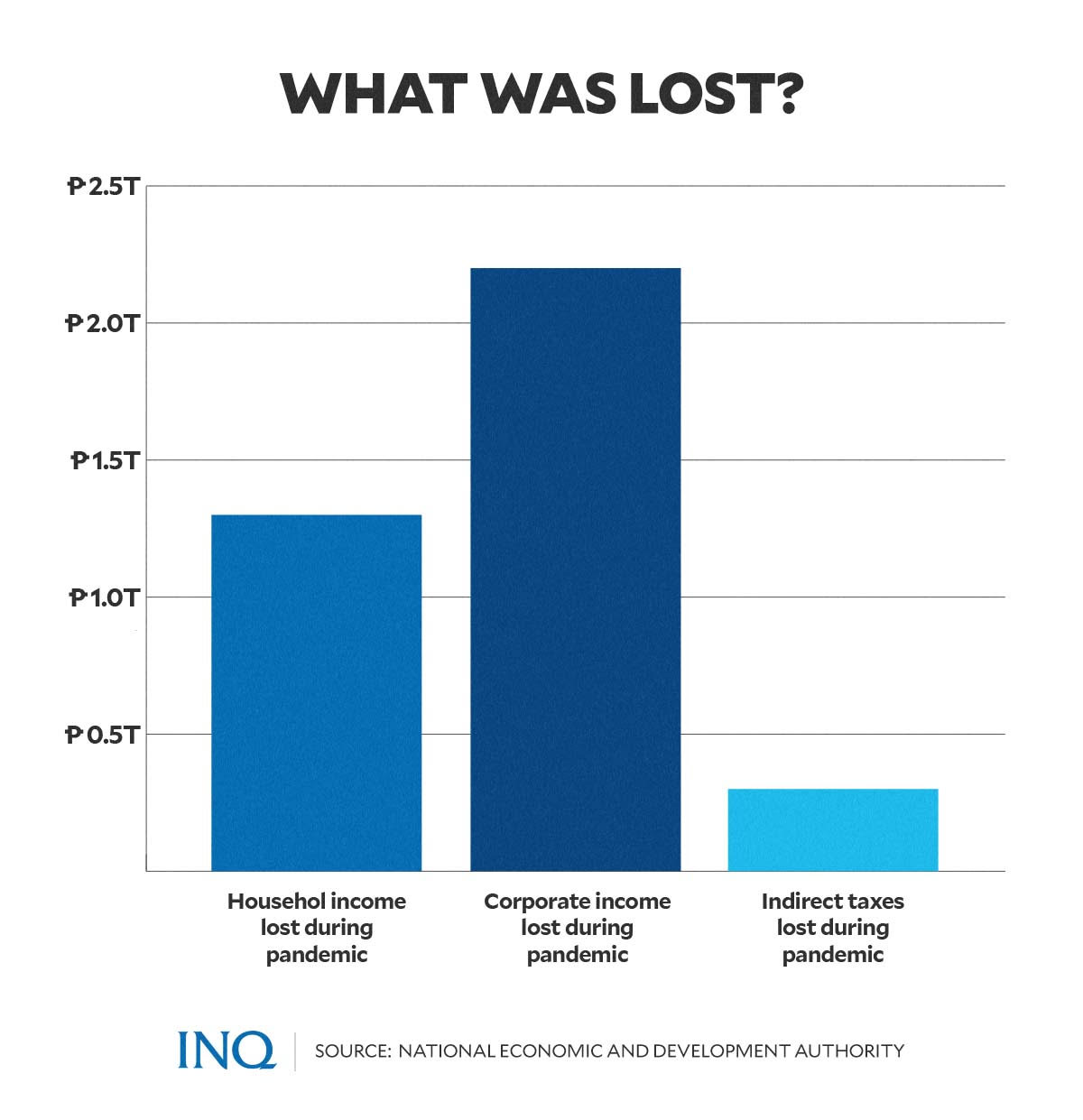
GRAPHIC: Ed Lustan
He stressed that there’s a need to accelerate and then sustain the drop in COVID-19 cases so that the Philippines “can recover what we lost” because of the pandemic which started in 2020.
The shift of Metro Manila and 38 areas to the least restrictive Alert Level 1, Chua said, will have an immediate positive impact on 62 percent of the economy and 48 percent of workers in the Philippines.
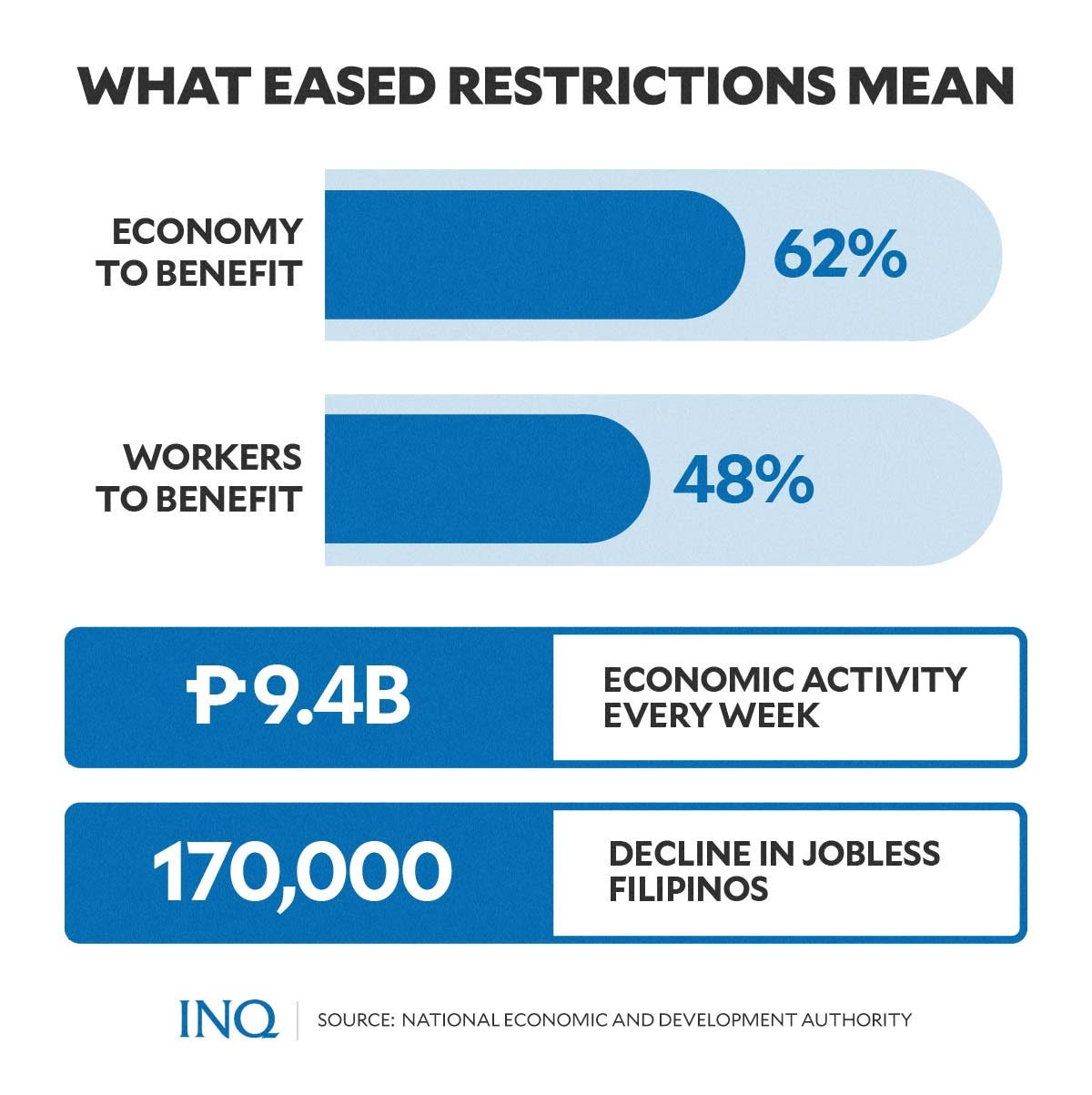
GRAPHIC: Ed Lustan
It will likewise generate P9.4 billion worth of weekly economic activity, like P3 billion more in salaries and income every week and 170,000 less jobless Filipinos over the next three months.
READ: P3 billion in salaries, income expected weekly under Alert Level 1 – NEDA chief
Once the rest of the Philippines shifts to Alert Level 1, P16.5 billion worth of weekly economic activity is expected. This comprises P5.2 billion more in salaries and income weekly and 297,000 less jobless Filipinos over the next three months.
Eased restrictions generate finances
Lopez said the downgrade is expected to generate 400,000 to 500,000 jobs, and 800,000 jobs when the rest of the Philippines shifts to Alert Level 1. Tourism is likewise expected to recover P750 billion of what it lost.
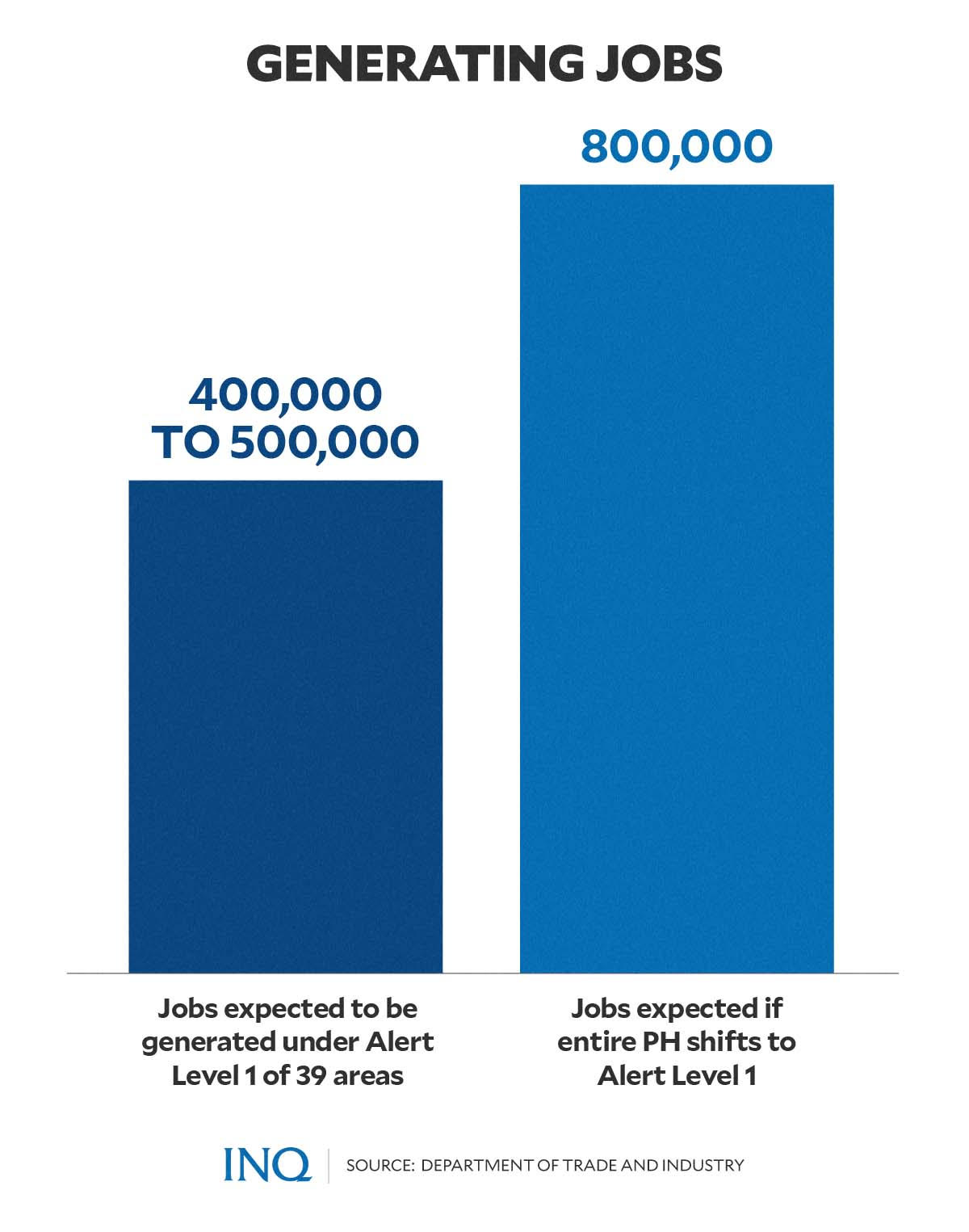
GRAPHIC: Ed Lustan
The Ibon Foundation, however, said jobs should be decent-paying because if not, “family incomes and earnings will remain low and will even repress aggregate demand and constrain economic recovery.”
Chua also said the resumption of physical classes will generate P12 billion in economic activity, saying that the presence of students in schools will help revive businesses.
Education Secretary Leonor Briones said 1,726 schools are presently having face-to-face classes while 6,213 out of the 60,473 schools in the Philippines are already prepared for the resumption of physical classes.
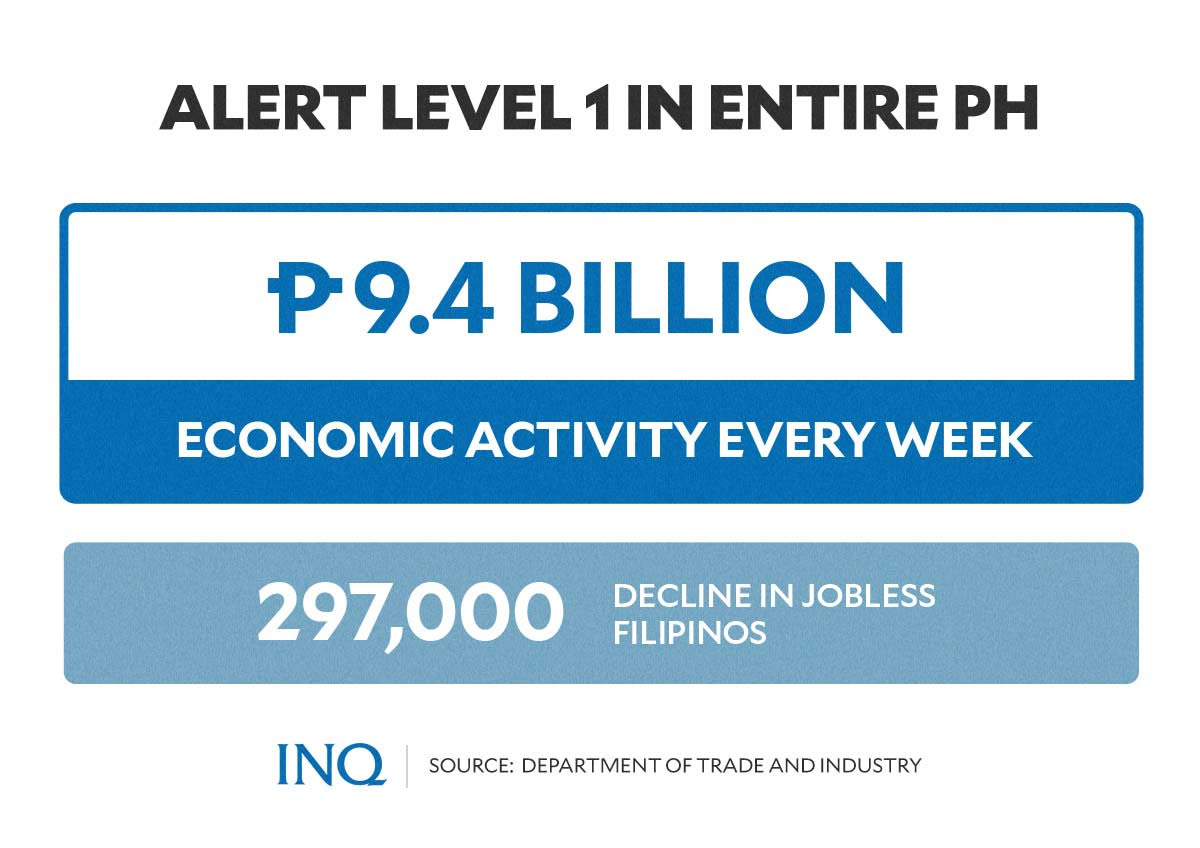
GRAPHIC: Ed Lustan
According to Chua, as much as P11 trillion worth of productivity every year had been lost as the Philippines continued to forego physical classes. He said resumption of face-to-face classes can likewise increase learning outcomes by 50 percent.
READ: In-person classes will spur economic activity worth P12 billion – NEDA chief
‘Not prepared’
Dr. Maricar Limpin, president of the Philippine College of Physicians, told One News that while current COVID-19 cases signify that “we can downgrade to Alert Level 1,” the concern is “are we prepared?”
The Department of Health (DOH) reported 951 new COVID-19 cases on Feb. 28, the lowest so far this 2022. The last time that the Philippines saw cases fall to less than a thousand was on Dec. 29, 2021.
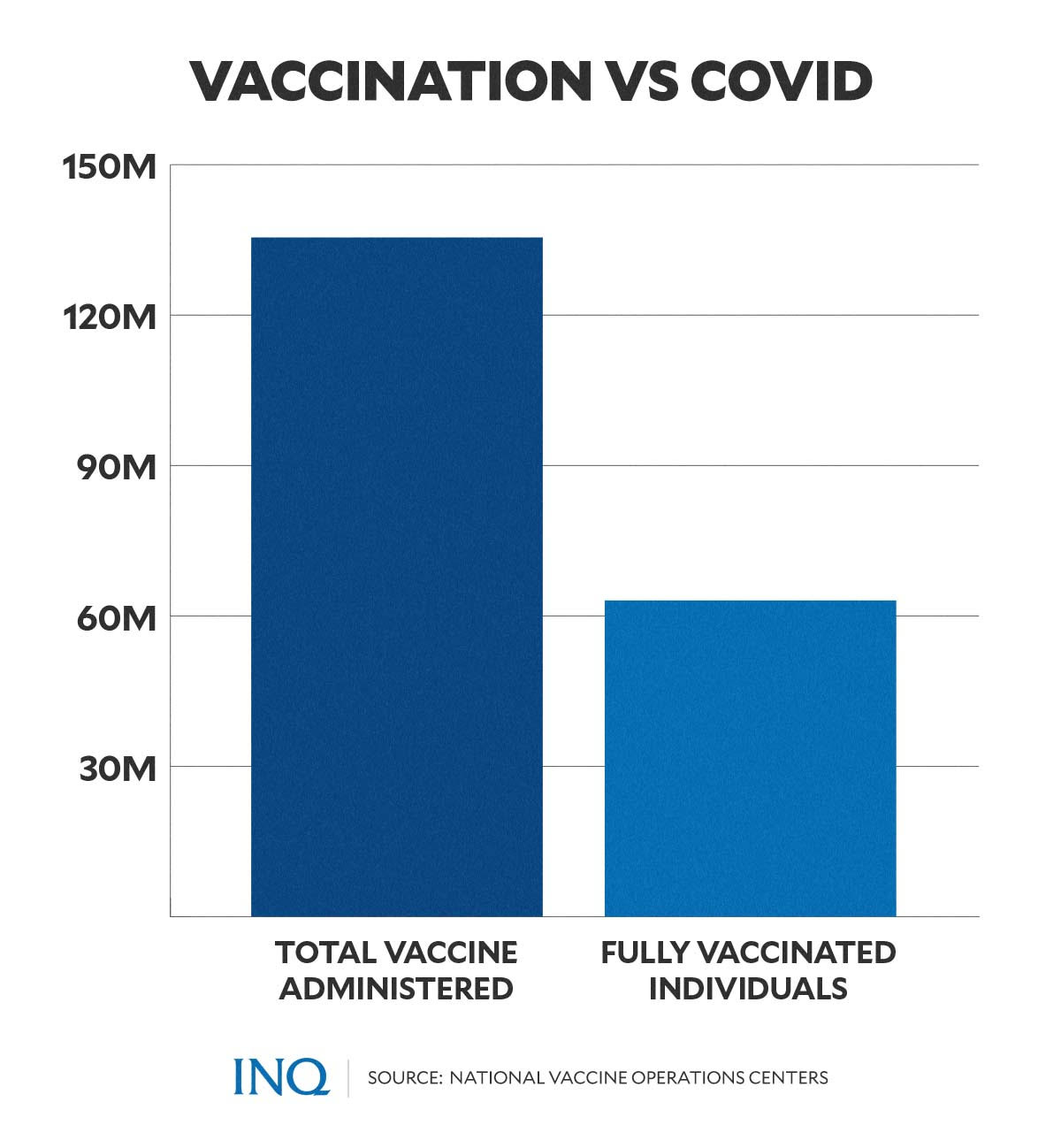
GRAPHIC: Ed Lustan
The Philippines now has 3,661,997 cases––52,179 active cases, 56,451 deaths, and 3,553,367 recoveries. The DOH said 47,157 cases have mild symptoms; 2,779 have moderate symptoms; 1,417 have severe symptoms; 528 are without symptoms; and 298 critical.
Limpin, who said that the Philippines is not yet prepared for the least restrictive Alert Level 1, said the government should have prepared to make certain that a rise in COVID-19 cases will be prevented.
“We will only know after three to four weeks from the time that we have downgraded to Alert Level 1,” she said, stressing that there are a lot of things to consider: the election campaigns, public transportation, and ventilation.
“I do believe that we have not really prepared for the Alert Level 1 and that is why we are bracing ourselves for a possible spike again,” she said on March 1.
She explained that preparation means preventing what other countries are experiencing right now. “I think that’s something that we need to make sure, that we should be prepared.”
READ: Doctors’ group to gov’t: Make sure NCR is ready for Alert Level 1
For instance, she said when public transportation starts operating at 100 percent capacity, there should be proper ventilation because if one passenger is positive, that can already be a source of spread.
She earlier told ANC that “we have to closely monitor the election campaign period because the sheer volume of people gathered in one place could lead to a superspreader event.”
The campaign period for national elective positions started on Feb. 8 while the one for local elective positions will start on March 25.
“It is best for us to continue, probably, to slow down a bit, make the necessary preparations,” she said.
RELATED STORIES:
More than 63 million Filipinos now fully vaccinated – Galvez
PH has overcome Omicron threat of COVID-19 – Galvez
TSB
For more news about the novel coronavirus click here.
What you need to know about Coronavirus.
For more information on COVID-19, call the DOH Hotline: (02) 86517800 local 1149/1150.
The Inquirer Foundation supports our healthcare frontliners and is still accepting cash donations to be deposited at Banco de Oro (BDO) current account #007960018860 or donate through PayMaya using this link.